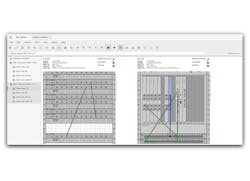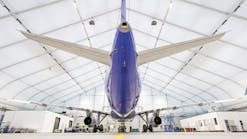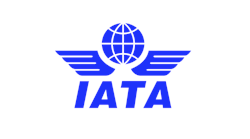Enabling Digital Transformation: How Major Airports Have Harnessed the Power of an Integrated Cable Management Solution
Cables - the common denominator in all IT infrastructure - bridge the gap between IT silos and airport systems, enabling operators to meet passenger demands with speed and flexibility. Of course, as airports continue to support more data, they require more and more cables, increasing system complexity. Legacy structures simply cannot handle the demands of software-designed networks and cloud computing together with hybrid environments. The desire to implement new IT operating models is a further driver of change. Without specialist management applications that can be adapted to meet new requirements, airports will quickly reach their limits.
To keep pace with these new demands and provide high-quality services to today’s digital passengers, airports need a modern cable management solution that will provide complete transparency into all physical and logical IT and telecoms networks, help manage network connectivity, reduce operating costs, increase efficiency, and improve network uptime. Airports should look for a cable management solution that is flexible, and scalable – ideally with robust functionality straight out of the box. Additionally, it should easily integrate into existing IT environments.
The following examples highlight how major airports are utilizing such a cable management solution to drive digital transformation:
Example #1: Frankfurt Airport Increases Reliability and Drives New Digital Services
In 1999, Frankfurt Airport (Fraport), the third largest travel hub in Europe, replaced its existing homegrown legacy documentation approach with a comprehensive cable management solution. Since then, its system has evolved into a web-based solution that offers an overview of the airport's entire IT infrastructure, from cable paths to navigation lighting systems to individual workstations inside the building. The solution also covers two data centers on the campus itself and their power supply systems. Using an interface to a geo-web system, the airport can now manage the routing of trays and nodes, accessible cable ducts, and shafts.
The solution extends far beyond simple visual depiction of the cables – it also provides rapid fault-finding and rectification in the event of a fault, enabling field service teams to be dispatched to the right location within the airport site, which spans more than 20 square kilometers. Mapping dependencies and displaying the interaction between active components and cables, from buildings through the physical and logical layers to applications and services, makes this all possible.
Frankfurt Airport’s cable management also makes an indirect contribution to the airport’s revenues. For example, IT orders from boutiques, restaurants, and travel bureaus in the terminals are fed directly into the system from the order portal. All stages are documented, from order status through cable patching to billing.
Example #2: A European Airport Achieves Automation and Transparency from the Cloud
This airport’s goal was to increase the efficiency of its IT specialists and improve IT resource management with a cloud-based cable management solution. Located just north of the Alps, the airport required a new solution that could analyze cable network problems quickly, manage repair measures effectively, and initiate IT services for the tenants on the campus, such as a new Internet connection or an additional WLAN hotspot for a restaurant. Ultimately, the airport chose a cloud-ready cable management solution that can document all cable and wiring routes as well as a database of the infrastructure to enable fast and efficient provision of high-quality IT services in the terminals.
In addition to enabling automation, the application is also part of the airport’s critical infrastructure as it maps the entire reporting and security systems. Signals from cameras, fire alarms, and the floor lighting system all run through cables that are documented in the cable management software. Given the strict nature of these installations, the operator can rest assured that it meets all audit requirements and technical regulations with up-to-date documentation. Additionally, having an overview of IT infrastructure utilization and accurate knowledge of the available resources reduces the need to lay new cables.
Example #3: IT Meets Architecture in the Persian Gulf
For an emerging terminal on the Persian Gulf, an integrated cable management solution was crucial to support the planning phase of its new build. The main focus of this major international airport in the United Arab Emirates was on security and prestige, and instead of utilizing their existing cable management software, a new solution was chosen to provide documentation of the civil network cabling in the new terminal at an early stage.
The main benefit of this new cable management solution was improved data quality. When the terminal is complete, the operator will have both printed and electronic documentation containing all necessary information on the cables plus measuring protocols. This documentation was particularly valuable to the client in terms of compliance and security as it bridges the gap between the planned and as-built status.
Currently, the airport’s IT team manages about 150,000 copper and 65,000 fiber connections, a data center, two central comms rooms, around 170 distributor rooms, and 1,000 racks within the terminal. To support optimization of patch management in the field, the cable management software is used in conjunction with an intelligent patch management system. Once the terminal is open, the installation will be rolled out as a blueprint for the operator’s other terminals and airports. Here again, the aim is to minimize any disruption of operations.
New Tools to Meet New Demands
Overall, modern tools and technologies are required to meet passenger demands, support new services, and become the hub of choice. Having a complete overview of all cabling will ensure teams can meet these requirements, keep pace with digital transformation, and maintain smooth airport operations.
Significant benefits of an integrated cable management solution include:
1. Complete transparency into all physical and logical assets and resources.
2. Efficient planning and execution of infrastructure changes.
3. Reduced operating costs thanks to improved management of the infrastructure.
4. Rapid access to all infrastructure and services data.
5. Greater efficiency as a result of precision integration into existing processes.
6. Maximum uptime through faster fault recognition and repair measures.
7. Optimized provision and higher quality of business services for customers, such as airlines and retail, due to detailed planning and documentation.
8. Support for compliance tasks and audits.
Matthias Gromann is the Director of Business Line IT & Data Center Solutions at FNT Software. He has many years of experience as an IT technology expert and is FNT’s topic leader for service-oriented automation in infrastructure management. In his role, he shapes FNT’s solution approaches for enterprise IT, helping companies to achieve greater transparency, more security, and increased productivity in the operation of critical infrastructures.





